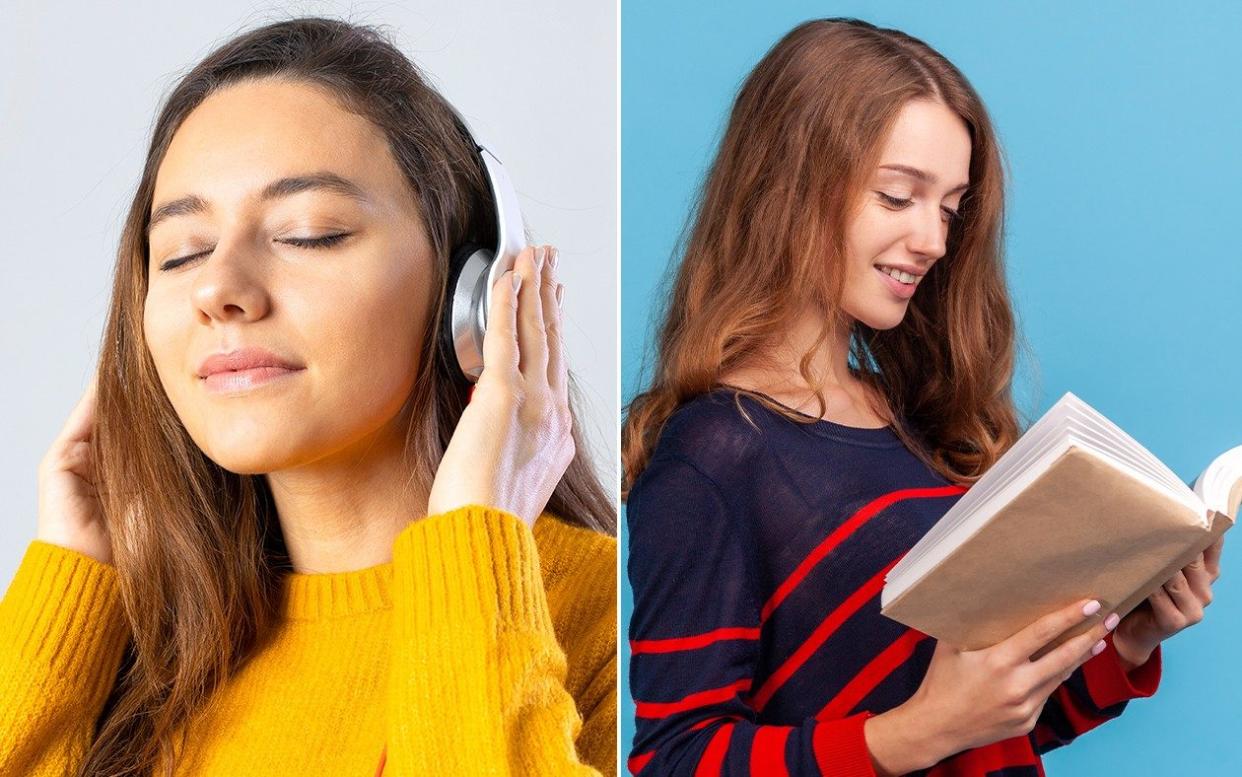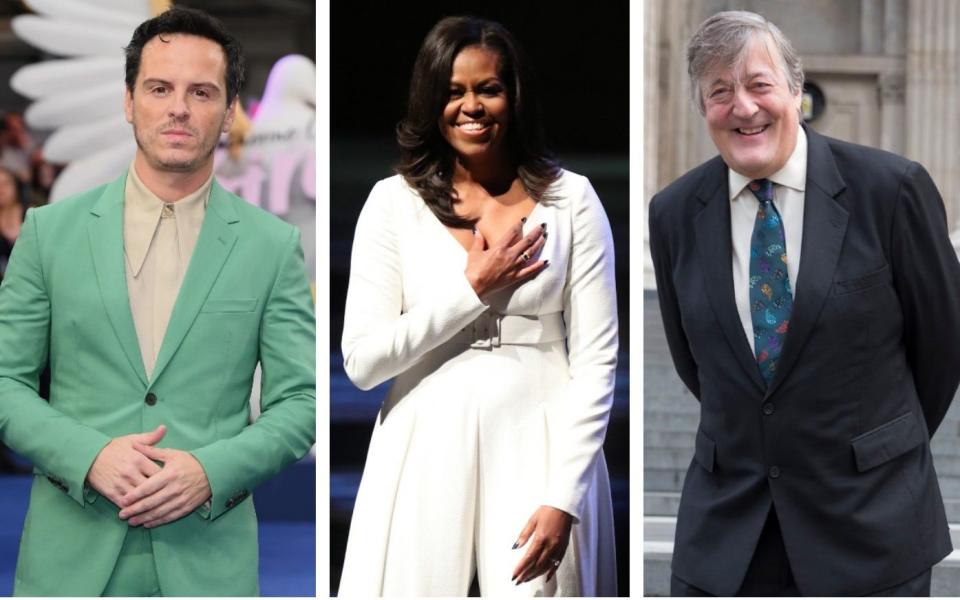Why audiobooks can’t beat the real thing

First it was music: then it was podcasts. Now Spotify, the most popular streaming service in the world, is offering audiobooks. For now they are only available in the United States and their cost is not included in Spotify’s existing membership packages. Given the pace of change in the sector, neither should remain the case for long.
More than 40 years after The Buggles claimed that video killed the radio star, methods of audio content consumption are stronger than ever. Audiobooks have been a going concern since the mid-1980s, but technological advances in the smartphone era have brought accessibility and convenience. No more lugging around umpteen cassette cases or CD boxes merely to get through the latest Joanna Trollope: simply download to your phone, tablet or in-car multimedia system and start listening.
The global market is estimated to be worth around £3.5 billion and rising fast. Competition is fierce: Google Play, Apple, Audible and Kobo are already players in the market. “It is the blue-eyed boy of publishing at the moment,” says Fionnuala Barrett, audio publishing director at HarperCollins.
There’s no doubt audiobooks can boast several advantages over traditional books. You can listen to them while doing other activities: driving, gardening, housework, walking the dog or exercising, for example. They can afford a communal experience, with couples or families all able to listen to the same thing at once. And a good narrator – Stephen Fry, Michelle Obama, Rosamund Pike, Andrew Scott and Meryl Streep have all turned their hand to audiobooks – can make words and story come alive in ways that a reader alone with their own internal voice may not be able to.
But the big question is, are audiobooks as good for you as traditional reading? Consistent reading improves your vocabulary, grammar, reasoning, concentration, critical thinking and ability to communicate. These in turn will help promote empathy, social perception and emotional intelligence. How much of this gets lost in the switch from page to app and in what Deloitte, the global consulting firm, describes as “a war between those who want to use their eyes versus those who prefer their ears”?
Some things certainly do. There are few pleasures – at least those suitable for listing in a family newspaper – to compare with losing oneself in a good book. But it does require concentration and absorption to the exclusion of all else. Reading is active in ways which listening is not: you have to keep reading to progress with a book, whereas an audiobook will keep playing until you stop it. Reading is something you do: listening is something that happens to you.
“As you’re reading a narrative, the sequence of events is important and knowing where you are in a book helps you build that arc of narrative,” says Daniel Willingham, a professor of psychology at the University of Virginia. These physical anchors, absent in audiobooks, seem to aid memory and comprehension, as do the physiological aspects of reading.
“About 10 to 15 per cent of eye movements during reading are actually regressive, going back and re-checking,” Willingham adds. “This happens very quickly and it’s sort of seamlessly stitched into the process of reading a sentence.” Rewinding an audio file even a few seconds is more disruptive. In the case of most books this may not be a problem, but complex and/or technical books are almost certainly better read than listened to – you can’t underline or highlight passages and text boxes or bolded words to emphasise importance are much harder to get across in audio.
The majority of people – around 65 per cent – are predominantly visual learners, best absorbing information through reading. Thirty per cent are auditory learners and the remaining five per cent kinaesthetic ones who learn by doing rather than seeing or hearing.
Reading is more time-efficient than listening: the average adult reads around 250 to 300 words per minute, whereas the recommended talking speed for high comprehension is 150 to 160 words per minute.

Dr Matt Davis, programme leader at the University of Cambridge Cognition and Brain Sciences Unit, says that “reading and listening involve different senses”. Davis explains that each of these connects to a different part of the brain: things that you see are processed in the visual cortex at the back of the brain, whereas things that you hear are processed by the auditory cortex which sits on the side of the brain, above the ears.
But when it comes to the ways in which the brain processes information, there is much less distinction between reading and listening than many might think. “We see that many of the same parts of the brain are involved, regardless of where the information comes from,” Davis continues. “The same brain systems seem to be involved in accessing the meaning of written and spoken words.”
This has been confirmed by University of California at Berkeley neuroscientists. Dividing the brain into 60,000 tiny areas called voxels, they found that the brain mapping – vibrant patches of colour fluttering on the cerebral cortex – for listening and reading were nearly identical, even though they covered so many different brain regions.
And though we rightly value reading as an intellectual skill, stories have of course been aural for longer than they have been visual, both collectively and individually. Before widespread social literacy, storytellers would recount tales to crowds large and small: before we learn to read as children, our parents and carers read us stories. Spoken storytelling has been around for tens of thousands of years: widespread literacy dates back only a few hundred years, to Johannes Gutenberg and the invention of the printing press in 1440.
In some cases, audiobooks can be better than traditional ones, especially for those who suffer from dyslexia or other reading difficulties. “Anyone who finds reading difficult might retain more from listening to an audiobook,” says Davis. “The additional effort involved in reading the words uses mental resources that they would otherwise need for comprehension and memory.”
The social aspect of keeping up has been alluded to by author Kit de Waal, who says that her dyslexic son Luke “could read all the Harry Potter and Michael Morpurgo stories and didn’t feel excluded”. Another highly-regarded author, Neil Gaiman, points to the emotional honesty of an audiobook: “You’re down there in the words, unable to skip a dull-looking wodge of prose, unable to speed up or slow down, less able to go back. It’s you and the story, the way the author meant it.”
So audiobooks are here to stay and that is no bad thing. The level of what you’re consuming is more important than the medium through which you consume it. But no matter how useful or prevalent audiobooks become, it should and must never be at the expense of literacy itself. “Learning to read is the single most important thing children do at school,” says Davis. “Too many children never get to fully experience the joy of reading. To be able to be absorbed in a book is a wonderful skill.”

 Yahoo News
Yahoo News 
